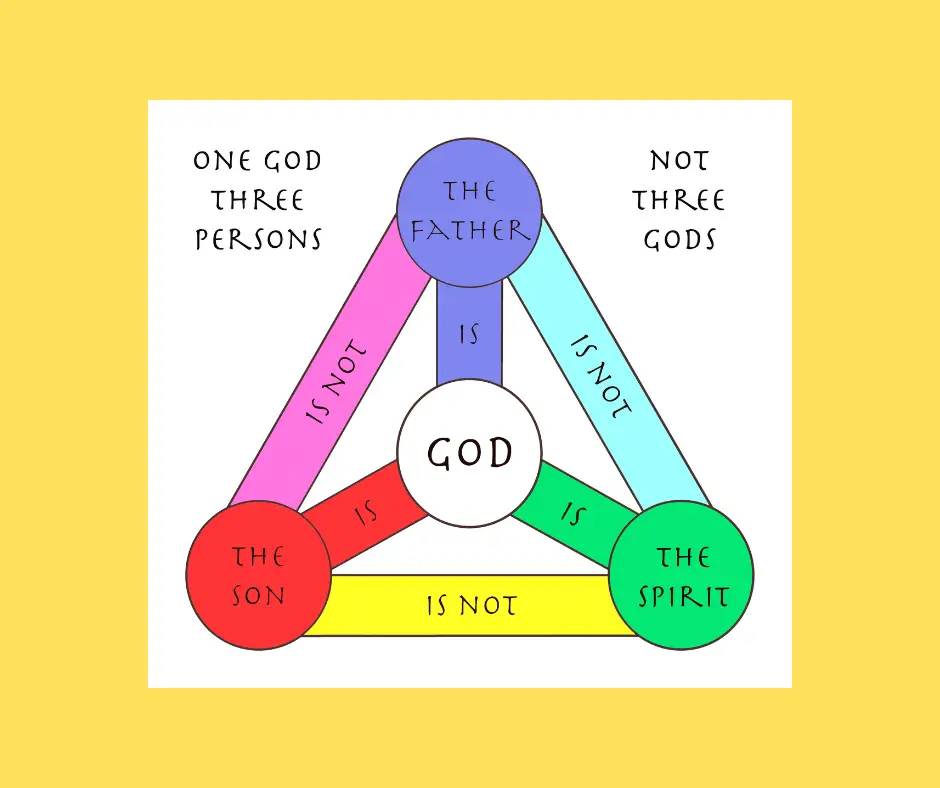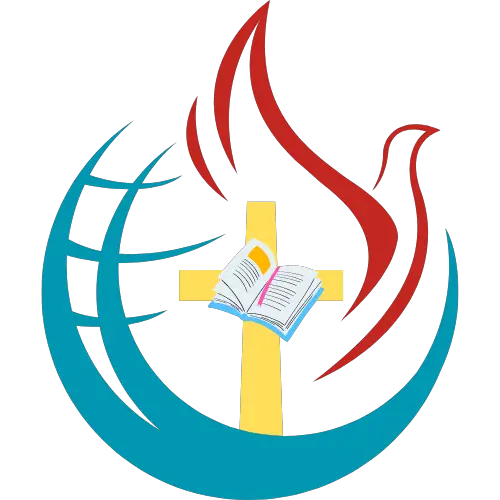
Basically the holy trinity is a Christian doctrine that identifies one God as three co-eternal, consubstantial, co-equal divine persons. These three persons are: God the Father, God the Son, and God the Holy Spirit.
The doctrine of the Trinity
Generally speaking, the doctrine of the Trinity is a statement that one God exists as three equally divine “Person” who have equal divinity. However, there are many different Trinity theories. These theories imply different numbers of divine selves, as well as different conceptions of the Persons.
There are many philosophers who have argued against belief in the Trinity. These philosophers object to the idea of absolute identity, indiscernibility, and incoherent logical implications. They also object to the use of singular referring terms.
An analytic philosopher is someone who uses analytic metaphysics and logic to understand religious doctrines. Analytic philosophers are trying to provide a precise and defensible form of religious doctrine.
One of the most important analytic philosophers in recent years has been William Hasker. In this book, Hasker seeks to reconstruct the doctrine of the Trinity using contemporary analytic metaphysics. He draws on ideas from Swinburne, Plantinga, and Leftow.
Hasker believes that the Persons of the Trinity are distinct centers of knowledge, will, and full sense. He also believes that the Persons are eternally omnipotent.
The Persons of the Trinity never differ
Despite the fact that the Holy Trinity is a mysterious concept, there is evidence that it is more than just a shared essence. A few passages in the Bible clearly reveal the Divinity of one of the three Persons.
The best known is the one in Matthew 28:19. The baptismal commission, which entails a commission of the three Persons, also signifies the reality of the Trinity. The Trinity, however, cannot exist without a distinct order of generation and procession.
The Father sends the Son, who works with the Holy Spirit. The Father is the fountainhead of Deity, and the Son is eternally begotten from him. The Father is also the source of the Spirit, who proceeds from the Father. The Trinity has a definite order of operation, and each Person performs his or her role in the external works of God.
While the trinitarian theology may not be as simple as a trinket, there is a good chance that the Trinity will be the subject of your next sermon. It is true that a number of passages in the Bible speak of the Divinity of one of the Three Persons, but this is not enough to convince you that the Threefold God is a real person.
The three divine selves are so many qua-objects while God is not
Supposedly, a three-self Trinity theory holds that the three Persons of the Trinity are three selves. However, such theories are rife with numerical problems. Some posit three divine selves with sufficient properties to be gods. Other theories concede the concept of tritheism.
The three selves of the Trinity may appear to be different at first glance, but they are actually numerically the same. Each compound of the divine self is the product of a particular kind of hylomorphic compounding relation.
For example, the Holy Spirit arguably combines the sacramental attributes of an incarnate Son and the mental token of an omniscient Father. However, some argue that the Holy Spirit is actually different selves.
There are numerous three-self Trinity theories, some of which are based on ideas derived from ancient sources. These theories are primarily concerned with constructing a three-self Trinity theory that will avoid a monotheistic God. Other theories are more focused on salvaging parts of the existing Trinity theories.
Some of the more sophisticated three-self Trinity theories have incorporated the ideas of William Hasker, who has constructed a more developed three-self Trinity theory. He has also incorporated some ideas derived from Swinburne and Rea.
The Son is not the same person as anyone who is triune
Those who hold to the Trinity theory often express the doctrine by saying that there is one God, who is three equally divine Persons, called the Father, the Son, and the Holy Spirit. However, this is not an accurate description of the Godhead. These three Persons are not identical, nor are they identical to each other. The triune God is a complex entity.
Trinity theorists have proposed various accounts of the Trinity. Some of these theories make the Son and the Father the same self, while others make them less than themselves. These theories also make the Persons “divine” in other ways. For example, the Son and the Father are both just. Alternatively, the Persons are identical in nature.
One theory is called “atomic” and suggests that there are differences between the Persons. For example, the Father is not the same Person as someone who is “F.” This is analyzed by comparing “F” with “F” and “F” with “F”. Often, the Son is represented by a symbol, such as a cross.
Another theory, called “person-collapse,” makes the claim that there are three Persons, but that the Father and the Son are not numerically identical. In other words, the Persons have the same space. However, this view is unintelligible.
A solitary divine self would be lacking this glory
Several theories have been developed about the number of divine selves in the Trinity. Depending on the theory, there is either one divine self, or there are three.
Baber’s Neo-Sabellian theory suggests that there are three selves in the Trinity. Each is a substance, or mode, and each is a continuation of the preceding selves. They are also qua-objects, meaning that they are numerically three things. This is different from a relative identity theory, wherein numerical sameness is relative to concept.
Swinburne’s monotheism permits the creation of divine being, but jeopardizes personhood for each of the three. He sometimes refers to the Trinity as “God himself.”
The Nicene creed, a Catholic theological statement, says that there is only one “divine person” in the Trinity. This claim is not a factual statement, and does not make the triune God a true person.
The Bible deity Yahweh commands history and occasionally appears in humanoid form. He is also portrayed as having great knowledge, wisdom, and power. He predicts the future and commands the prophets.
The modal theory of identity, in contrast, does not require ad hoc philosophical commitments. It can make sense of how Jesus interacted with his Father.
A non-rigid relationship between the Father and Son
Historically, the Father and Son of the holy trinity have been understood to have a non-rigid relationship. In the New Testament, the terms “Father” and “Son” seem to imply numerical identity, but that is not the case.
There are several theories about the nature of the Father and Son of the holy trinity. Some believe that they are the same Person, while others say they are different. These theories are called one-self and three-self Trinity theories. One-self trinitarians often imagine God as a friend or savior who takes on flesh. They think of God dying to reveal the Father to humankind. Others imagine that the Holy Spirit becomes incarnate on another planet before the Incarnation.
One-self trinitarians also tend to think of God as the last event in three occurrences. Stephen Layman, for example, believes that the Father, Son, and Holy Spirit are three selves.
Three-self Trinity theories believe that the Father, Son, and Holy Spirit do not exist as separate Persons. These theories are based on the concern that three divine selves can exist in isolation.
The three divine properties
Traditionally, the doctrine of Trinity is characterized by the three divine properties of the Holy Trinity. These properties are: the divine essence, the divine will, and the divine intellect. These three properties constitute the one essence of God. These properties also belong to the Three Divine Persons.
The divine properties of the Holy Trinity are not dependent upon the other. They are not created, but rather they are co-existent. This is a major weakness in the doctrine of Trinity. It is impossible to discuss the Trinity without the distinction between the authority, submission, and paternity of each of the three divine properties of the Holy Trinity.
The Father is the first of the three divine properties of the Holy Trinity. This is because the Father is the fountain of divinity. This fountain produces the Son. The Son is the second of the three divine properties of the Holy Trinity. The Son receives the Divine Nature from the Father. The Son works with the Father through the Holy Spirit. The Father is never less than the Son.
The three hylomorphic compounds
Generally speaking, the doctrine of the Trinity is a claim that one God exists as three divine “Persons”. These “Persons” are Father, Son, and Holy Spirit. However, each of these three Persons has a distinct role.
The Father and Son are described as omniscient, eternally omnipotent, and in some sense “necessary”. The Holy Spirit is described as having a “prophetic role” in the world. This work is largely behind the scenes. The Father is always identified as the sovereign.
The Holy Spirit brings conviction of sin to the world. He also enables fallen natures to respond to God’s offer of salvation.
The Trinity is a complex entity. It has a history of development. During the fourth and fifth centuries, most catholic theologians agreed on a Trinity theory. However, in the second half of the twentieth century, many theologians rejected the doctrine as containing a single self. This theory has been called modalist and near-modalist.
The doctrine of the Trinity has been criticized as a one-self theory. However, many influential twentieth century theologians argued that the Trinity contains a single self.
Author

Alona Smith is a devoted follower of Jesus Christ who believes that life’s true purpose is found in knowing Him and making Him known. She is passionate about sharing God’s Word with clarity and compassion, helping others see the beauty of the gospel of grace revealed through the Apostle Paul.
Grounded in Scripture and led by the Spirit, Alona seeks to live out her faith in practical ways—showing kindness, extending forgiveness, and walking in love. Whether serving in her local church, encouraging a friend in need, or simply living as a light in her community, she strives to reflect Christ in both word and deed.
